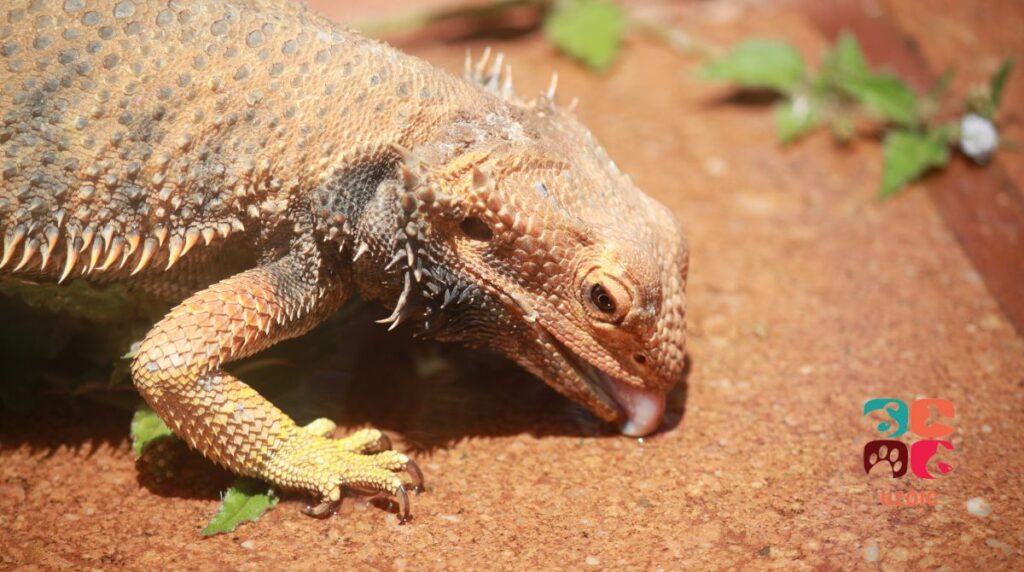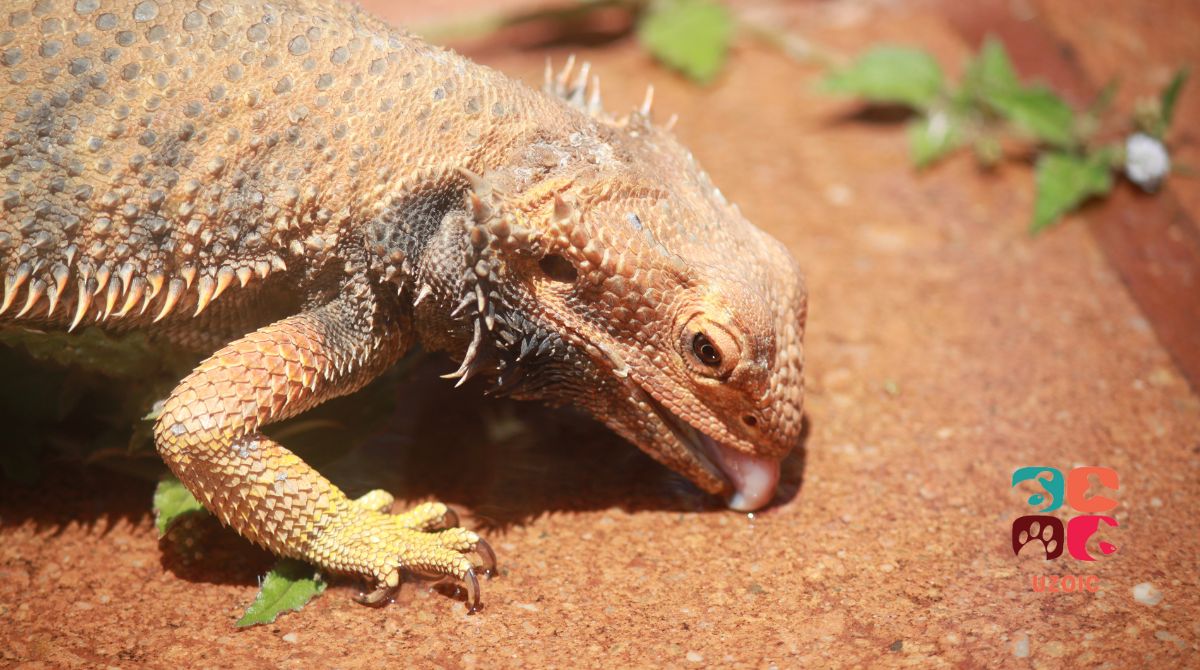Is calcium sand safe for a bearded dragon? That is a question that pet owners are asking more and more lately. With the increasing popularity of bearded dragons as pets, people are looking for ways to make their lives easier. Many people in the reptile community are concerned about using calcium sand as a substrate for their dragons. Is this a safe option? Let’s take a closer look at the pros and cons of using calcium sand as a substrate for bearded dragons.
Bearded dragons come from arid regions and spend most of their time on the ground. In their natural habitat, they bask in the sun on warm rocks and hide in crevices when it gets too hot. Sand might sound like a great option for your bearded dragon knowing that they are native to rocky regions of Australia. So you may think it is best to replicate the natural habitat by using some sand as substrate; however, it is not a great idea to use any loose material such as sand for your bearded dragon as it poses health hazards for your beardie.
If you are looking for a safe and affordable option for your bearded dragon’s enclosure, keep reading to find out the safest substrate for your bearded dragon.
Table of Contents
What Is Calcium Carbonate Sand?

Calcium carbonate sand is a type of sand that is mostly made up of calcium carbonate. This mineral is found in many rocks, including limestone, marble, and chalk. Calcium carbonate is also the main component of seashells.
Because it is so abundant, calcium carbonate sand is a very economical choice for many applications. For example, it can be used as an abrasive in blasting and as a filler in paper, plastics, and paints. It is also a popular choice for setting aquariums and terrariums because it neutralizes acidic water and helps to maintain a healthy pH balance.
Is Calcium Sand Safe For A Bearded Dragon?
Calcium sand is not safe for bearded dragons or any other lizards or tortoises. The main reasons for this are that calcium-sand is alkaline, which will neutralize stomach acid and cause digestion problems, and secondly, it causes impaction if your beardie eats too much of it.
Calcium sand is not safe for bearded dragons. One of the biggest concerns with using calcium sand as a substrate is the risk of impaction. Bearded dragons are prone to impaction if they eat too much sand. This can cause serious health problems and even death. So if you decide to use calcium sand, monitor your dragon closely to ensure they are not eating it.
While the sand can provide a good source of calcium, it also poses a serious choking hazard. Bearded dragons are prone to swallowing large pieces of food, which can get stuck in their throats and cause them to choke. Sand is also very abrasive and can damage a bearded dragon’s digestive system if swallowed. If you want to provide your bearded dragon with calcium, consider using a calcium powder supplement instead. Calcium powder can be sprinkled on their food or added to their water and is much less likely to cause problems if swallowed.
Why Is Calcium Sand Bad For Bearded Dragons?
Calcium sand is a type of substrate that is sometimes used in bearded dragon enclosures. While it may seem harmless, calcium sand can be very dangerous for these reptiles. If ingested, calcium sand can cause impaction, a condition where the digestive system becomes blocked. This can lead to serious health problems and, in some cases, death.
In addition to the risk of impaction, calcium sand can also irritate a bearded dragon’s skin and eyes. Also, calcium sand being alkaline, it will neutralize stomach acid and cause digestive problems for your bearded dragon.
For these reasons, it is generally recommended that calcium sand be avoided when setting up an enclosure for a bearded dragon.
Is Calci-Sand The Worst Substrate?
There is a lot of debate in the reptile community about which substrate is best. Some keepers prefer to use natural materials like bark or soil, while others prefer more sterile options like paper towels or artificial turf. However, one substrate that is often vilified is Calci-Sand.
Calci-Sand is made of calcium carbonate, which can be harmful if ingested by reptiles. In addition, the sand can get very hot in direct sunlight, making it difficult to regulate temperature.
However, Calci-Sand does have some benefits. It is very absorbent, so it can help to keep humidity levels high. In addition, it is very cheap and easy to find. Overall, there are pros and cons to using Calci-Sand as a substrate.
Ultimately, it is up to the keeper to decide whether the benefits outweigh the risks.
What Kind Of Sand Is Safe For Bearded Dragons?
Any kind of loose sand/substrate is a risk for bearded dragons. However, if you must use sand, then well-sifted and cleaned ‘Play Sand’ is the only type of sand that we recommend to use for bearded dragon enclosure. It is less dusty than other types of sands. A note of caution is that you should sand only for adult beardies and not juveniles.
What Substrate Is Safe For Bearded Dragons?
If you want to use the safest substrate for your beardie, try reptile carpet, stone or slate tile, shelf liner, or newspaper. Even though calcium sand is technically edible, it’s still not advisable to use it as a substrate because it can cause health problems for your beloved pet.
Conclusion
In conclusion, calcium sand is unsafe for bearded dragons and should be avoided. If you must use sand, then only well sifted and cleaned play sand should be used. Other safe substrates for bearded dragons include reptile carpet, stone or slate tile, shelf liner, or newspaper. Be sure to monitor your dragon closely if using any loose substrates to ensure they do not ingest any of the material. If you have any concerns, consult a veterinarian specializing in reptiles. Thanks for reading!
You may like:
- Can Bearded Dragons Throw Up?
- Why Is My Bearded Dragon Walking On Its Wrists?
- How To Make A Bearded Dragon Dig Box?


